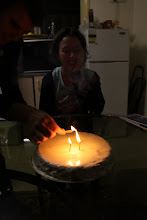Excuse a response to:
Tze Ming Mok. “Race You There”, Landfall 208. Dunedin: Otago University Press, 2004: 18 - 26
On March the 13th 1964 a young European woman, Kitty Genovese, was brutally attacked in a car park close to her apartment complex in New York. The attacker was frightened off after initially stabbing her, only to return, find her in a hallway of her apartment building, and continue the attack, eventually killing her. Despite the attack taking place over thirty minutes, and there being a dozen witnesses to her screams and eye witnesses to the attack in the car park, only two phone calls were made to the police. 45 years on, this attack is the echo that rings out when similar inaction occurs in the present day, such as that in the case of Chi Phung who was attacked in Christchurch in 2005. Though these crimes were brutal, they have become notorious instead for the role that the witnesses played in the outcome of these attacks. In New York the newspapers pointed the finger at ‘big-city apathy’, while in New Zealand much press was devoted to a notion of small town xenophobia bubbling beneath the surface of the garden city.
However, the research into this ‘bystander effect’, prompted by Kitty Genovese’s attack, found that the type of behaviour of a large group of people could not be explained simply by all encompassing generalisations. Instead researchers Darley and Latané found that the behaviour of a group functioned around a series of neurotic rationalisations on the part of the individuals as a function of interactions with others in the larger group. One example is pluralistic ignorance; the individuals within the group copy the behaviour of others facing the same situation, basing their actions (usually inaction) upon the rationalisation that others in the situation are more capable of reading the situation accurately and responding correctly. (Cited in Gleitman et al. 443-444)
Chi Phung was most certainly the victim of a violent attack that was motivated by race (the attacker was a member of the National Front). However, the bystander effect calls into question the meaningfulness of generalising the actions of a stream of individuals as evidence of ‘group’ xenophobia. It may be more useful to think about how the situation is read as a reflection of the experiences of the individual reader. Tze Ming Mok’s article includes a series of personal anecdotes suggesting that the attack and its aftermath may have resonated in terms of her own individual experiences of animosity based upon race. The bystander effect does not offer an excuse for standing by, but rather takes into allowance that vision might be affected by the individual’s perspective and their relation to others. It is clear from Tze Ming Mok’s article that this lens continues to affect vision after the events as well as during.
Works Cited
Gleitman, Henry et al. “Biology, Emotion and Social Behaviour: Altruism and self sacrifice” in Psychology (Sixth Edition). New York: W.W. Norton & Company 2004: 443 - 444
Tze Ming Mok. “Race You There”, Landfall 208. Dunedin: Otago University Press, 2004: 18 - 26
Subscribe to:
Post Comments (Atom)

2 comments:
I agree with you about the danger of "generalising the 'bystander effect' as 'group' xenophobia." I mean if we look to London with all the stabbings occuring there, regardless of race or gender there is basically no chance of a bystander helping out a victim...it's just too frightening and volatile - I suppose ther is a dual sense of helplessness and self-protection which overrides the impulse to act (in most cases - we mustnt forget Austin Hemmings - a rare case of heroism that I'm guessing will only add to people's fear of getting involved)
It is interesting that you mention the bystander effect in relation this particular attack. And it was probably the most sensible thing to attribute lack of help to.
Xenophobia can manifest itself in a variety of ways, some of them seemingly transparent. An apt example could the medias representation of the recent slew of violence attacks on dairy owners in south Auckland. The media seems to have quite effectively highlighted the fact that most of the victims are immigrants, a minority. It makes the issue seemed removed from most of the population’s, day to day lives, downplaying its dire significance.
Post a Comment